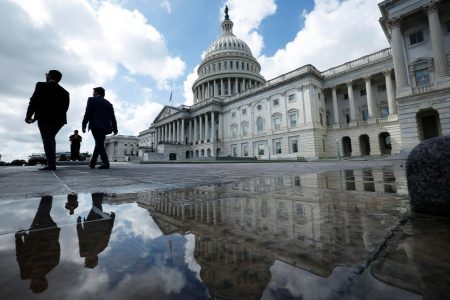There are many different tax elections available to taxpayers under federal tax law. And, often, these elections are advantageous. For example, taxpayers can make a qualified electing fund (QEF) election to avoid adverse tax consequences associated with holding a passive foreign investment company (PFIC). Or partnerships can make a section 754 election to avoid disparities between inside and outside basis after a partnership admits a new partner.
Making an election is somewhat easy. In addition to following the directions applicable to the specific election—such as filing necessary IRS forms—the taxpayer must make the election timely. Although taxpayers who file an election late risk losing the election entirely, there is relief available in some instances. Referred to as “section 9100 relief,” it allows taxpayers to make tardy elections, provided the requirements set forth in 26 C.F.R. § 301.9100-1 through 26 C.F.R. § 301.9100-3 are met.
Regulatory Versus Statutory Elections
The section 9100 regulations distinguish between “regulatory elections” and “statutory elections,” and this distinction is important. Generally, the IRS has more leeway to allow a late regulatory election over a statutory one. Accordingly, taxpayers who miss regulatory elections usually have longer time to request late-election relief, as compared to a missed statutory election.
Under the section 9100 regulations, a regulatory election means an election that has a deadline governed by administrative guidance, such as a regulation, a revenue ruling, a revenue procedure, or an IRS Notice or Announcement. Conversely, a statutory election means an election that has a deadline mandated by a statute.
Automatic Extensions
26 C.F.R. § 301.9100-2 provides an automatic extension for certain regulatory and statutory elections. The automatic extension is either six months or twelve months, depending on the type of election.
Under section 9100-2, an automatic twelve-month extension applies to specific regulatory elections, including: (i) the section 444 election to use a different tax year; (ii) the section 472 election to use the LIFO inventory method; (iii) the section 754 election applicable to partnerships; and (iv) certain tax-exempt filing application deadlines. Generally, the twelve-month extension period starts as of the due date of the return or the extended due date if a valid extension has been filed.
To the extent the election is not specified above, a taxpayer may seek an automatic six-month extension, which applies to both statutory and regulatory elections. For these purposes, the automatic extension generally starts from the due date of the return (excluding extensions), provided the taxpayer timely filed its return for the year the election should have been made. This automatic six-month extension does not apply if: (i) the regulatory or statutory election must be made by the due date of the return (excluding extensions), or (ii) the specific election is not tied to the due date of a tax return. See, e.g., Knish v. Comm’r, T.C. Memo. 2006-268 (9100-2 relief not available for extensions of time to file mark-to-market election under section 475(f) because 9100-2 does not apply to elections that must be made by the due date of the return without regard to extensions); PLR 201243011 (section 42(b)(1)(ii) election, although a statutory election, does not qualify for section 9100-2 relief because the election due date is not the due date of the return).
In addition, a taxpayer may only seek an automatic extension—either six or twelve months—if the taxpayer takes “corrective action” within the applicable six- or twelve-month period. To satisfy this requirement, the taxpayer must take all necessary steps required to make the election (e.g., filing the necessary IRS form). Moreover, if the late election is made through a return filing, the taxpayer must file an original or amended return for the year the election should have been made, stating at the top of the return: “FILED PURSUANT TO § 301.9100-2”.
Private Letter Rulings
If the taxpayer misses the automatic extension deadline, it may nevertheless seek an extension to make an election through a private letter ruling (PLR) request. However, this relief only applies to regulatory elections.
Unfortunately, PLRs are often expensive. In addition, taxpayers must meet additional requirements, such as convincing the IRS that the taxpayer acted reasonably and in good faith and that granting the late election would not prejudice the government’s interests. These requirements are discussed more below.
26 C.F.R. § 301.9100-3(b) provides circumstances in which taxpayers are deemed to have acted reasonably and in good faith. That provision also provides the inverse, or when taxpayers are deemed not to have acted reasonably and in good faith. A summary of the good-and-bad faith circumstances follows.
Good-Faith Factors
· The taxpayer makes the request for relief prior to the IRS discovering the failure.
· The failure to make the election was due to intervening events beyond the taxpayer’s control.
· The taxpayer was unaware of the necessity for making the election even after exercising reasonable diligence (taking into account the taxpayer’s experience and the complexity of the return or issue).
· The taxpayer reasonably relied on IRS written advice.
· The taxpayer reasonably relied on a qualified tax professional who failed to make, or advise the taxpayer to make, the election (taking into account the tax professional’s competence and awareness of relevant facts).
Lack Of Good Faith Factors
· The taxpayer seeks to alter a return position for which an accuracy-related penalty has or could have been imposed at the time the taxpayer made the request, and the new position requires or permits a regulatory election for which relief is requested.
· The taxpayer was informed in all material respects of the required election and the related tax consequences but chose not to file the election.
· The taxpayer uses hindsight in requesting relief—that is, the facts have changed since the election due date that makes the election advantageous for the taxpayer.
In addition to satisfying reasonableness and good faith, taxpayers must show that the grant of relief would not prejudice the government’s interests. Generally, the government’s interests are prejudiced if: (i) in granting relief, the taxpayer would have a lower tax liability in the aggregate for all tax years affected by the election than the taxpayer would have had if the election had been timely made (taking into account time value of money principles), or (ii) the relevant tax years affected by the election are closed due to the section 6501(a) statute of limitations.
Significantly, the IRS often requires taxpayers to submit affidavits that describe the events that resulted in the failure to make a timely election and the discovery of the failure. The agency may ask for additional information prior to issuing the PLR.
Some recent examples of relief provided by the IRS under 26 C.F.R. § 301.9100-3 include:
· PLR 202424019 (late self-certification of qualified opportunity zone under section 1400Z).
· PLR 202427005 (late election to file a consolidated income tax return under 26 C.F.R. § 1.1502-75(a)(1)).
· PLR 202424016 (late qualified terminable interest property (QTIP) election under section 2056(b)(7)).
· PLR 202424005 (late qualified subsidiary (QSub) election under section 1361(b)(3)(B)(ii)).
· PLR 202418006 (late section 754 election).
· PLR 202426014 (late mark-to-market election for a PFIC under section 1296).
Conclusion
Taxpayers who miss a tax election deadline are not always without options. In many cases, these taxpayers may be able to take advantage of the automatic-relief procedures set forth in section 9100-2 to correct a late regulatory or statutory election. Moreover, if the late election relates to a regulatory one, taxpayers may be able to use section 9100-3.
Read the full article here









